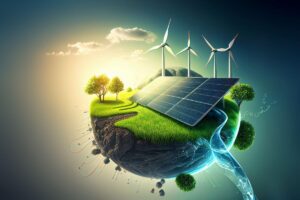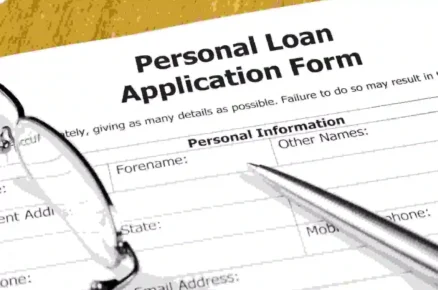Top 10 Sustainable Energy Solution Companies in USA
In a world awakening to the environmental challenges posed by traditional energy sources, the spotlight is now firmly on sustainable energy solutions. As we stand at the intersection of innovation and environmental responsibility, embracing sustainable energy is not just a choice but a collective commitment to a greener future. This article explores the dynamic landscape of sustainable energy, its diverse applications, and the transformative impact it holds for our planet.

The Paradigm Shift to Renewable Resources
Harnessing Solar Energy
Solar energy, a champion among renewable resources, has evolved into a cornerstone of sustainable power. Solar panels, equipped with photovoltaic cells, convert sunlight into electricity. As technology advances, the efficiency and affordability of solar panels continue to improve, making solar energy an accessible and viable option for homes, businesses, and large-scale power plants.
Capturing the Winds of Change
Wind energy has emerged as a powerful force in the sustainable energy revolution. Wind turbines, strategically positioned in windy regions, harness the kinetic energy of the wind to generate electricity. With innovations in turbine design and placement, wind farms contribute significantly to the global shift toward clean and sustainable energy.
Energy Efficiency: The Key to Sustainability
Smart Grids and Intelligent Energy Management
The integration of smart grids brings a new dimension to energy distribution. Smart grids leverage advanced technologies, such as sensors and automation, to optimize the flow of electricity. These intelligent systems monitor energy consumption patterns in real-time, allowing for more efficient energy distribution, reduced wastage, and enhanced overall grid reliability.
Energy-Efficient Buildings
Sustainable architecture embraces energy-efficient building practices. From energy-efficient lighting to well-insulated structures, green buildings prioritize reducing energy consumption. The integration of smart technologies, such as automated climate control and lighting systems, further enhances the efficiency of energy usage in commercial and residential spaces.
Electrifying Transportation with Clean Energy
The Rise of Electric Vehicles (EVs)
The transportation sector is undergoing a transformation with the widespread adoption of electric vehicles (EVs). Powered by electricity stored in advanced batteries, EVs offer a zero-emission alternative to traditional internal combustion engine vehicles. The growth of charging infrastructure and advancements in battery technology are driving the transition to a cleaner and more sustainable transportation system.
Sustainable Energy in Action
Microgrids for Resilient Energy Supply
Microgrids, decentralized energy systems, are gaining prominence for their resilience and sustainability. These self-contained grids can operate independently or in conjunction with the main power grid. In remote areas or during emergencies, microgrids powered by renewable sources ensure a reliable energy supply, contributing to energy resilience and sustainability.
Community Solar Projects
Community solar projects empower local communities to participate in the sustainable energy movement. Shared solar installations allow individuals who may not have suitable rooftops for solar panels to benefit from clean energy. These collaborative efforts foster a sense of community engagement and contribute to a more inclusive approach to sustainable energy.
Overcoming Challenges and Building a Sustainable Future
Addressing Intermittency with Energy Storage
One of the challenges of renewable energy sources is their intermittent nature. Energy storage solutions, such as advanced batteries and pumped hydro storage, play a crucial role in storing excess energy during peak generation periods. This stored energy can then be released during periods of high demand, ensuring a continuous and reliable power supply.
Policy Support and Global Cooperation
The transition to sustainable energy requires comprehensive policy frameworks and international collaboration. Governments, businesses, and communities must work together to create an environment that incentivizes sustainable practices, invests in research and development, and facilitates the global exchange of innovative solutions.
Integrating Solar Power for a Bright Tomorrow
Advancements in Photovoltaic Technology
The solar energy revolution is propelled by continuous advancements in photovoltaic technology. Thin-film solar panels, bifacial solar cells, and solar tracking systems are reshaping the efficiency and output of solar installations. As the cost of solar continues to decline, harnessing the power of the sun becomes an economically viable and environmentally friendly choice.
Solar Farms: Harvesting Sunlight at Scale
The concept of solar farms is transforming vast expanses of unused land into energy-generating powerhouses. These large-scale installations leverage economies of scale to produce significant amounts of clean energy. Solar farms are becoming integral contributors to the energy mix, supplying power to grids and reducing reliance on traditional fossil fuels.
The Wind of Change: Expanding Wind Energy Capacities
Offshore Wind Farms: Tapping into Oceanic Energy
Offshore wind farms represent a frontier in harnessing wind energy. Positioned in coastal waters, these farms capture stronger and more consistent winds, generating substantial electricity. As technology advances, floating wind turbines are emerging as a solution to tap into deeper offshore locations, unlocking new possibilities for sustainable wind power.
Small Wind Turbines: Localized Solutions
Small-scale wind turbines are making sustainable energy accessible at the community level. These compact turbines, suitable for residential and rural areas, cater to localized energy needs. By decentralizing energy production, small wind turbines contribute to energy resilience and empower communities to actively participate in the green energy transition.
Revolutionizing Transportation: The Electric Vehicle Era
Electric Vehicles (EVs): Driving Towards a Clean Future
The rise of electric vehicles is reshaping the transportation landscape. EVs, powered by electricity stored in advanced batteries, offer a zero-emission alternative to conventional vehicles. The increasing availability of charging infrastructure, coupled with ongoing improvements in battery technology, is propelling the widespread adoption of electric vehicles globally.
Sustainable Public Transportation
Cities are reimagining public transportation with a focus on sustainability. Electric buses, trams, and trains powered by clean energy sources are reducing emissions and promoting eco-friendly urban mobility. The integration of sustainable public transportation systems is a key step towards creating more livable and environmentally conscious urban environments.
Nurturing Energy Efficiency in Infrastructure
Smart Cities: A Holistic Approach
The concept of smart cities goes beyond technological innovation; it encompasses a holistic approach to sustainable urban development. Energy-efficient buildings, intelligent transportation systems, and integrated technologies for waste management contribute to the overall energy efficiency of smart cities. These innovations pave the way for greener, more resilient urban spaces.
Energy-Efficient Appliances and IoT Integration
In homes and businesses, energy-efficient appliances and the integration of the Internet of Things (IoT) are transforming how we consume energy. Smart thermostats, lighting systems, and appliances optimize energy usage based on real-time data, reducing waste and lowering overall energy consumption. This shift towards energy-efficient technologies enhances sustainability at the individual and organizational levels.
Overcoming Challenges: A Sustainable Energy Ecosystem
Grid Modernization and Energy Storage
Modernizing energy grids is a critical step in accommodating the variable nature of renewable energy sources. Smart grids, coupled with advanced energy storage solutions such as grid-scale batteries, contribute to grid stability and reliability. Energy storage addresses the challenge of intermittency, ensuring a consistent power supply even when renewable generation fluctuates.
Embracing a Sustainable Energy Future
In conclusion, sustainable energy solutions are not just technological advancements; they represent a commitment to a cleaner, greener, and more sustainable future. From harnessing the power of the sun and wind to revolutionizing transportation and enhancing energy efficiency, the possibilities are vast. By embracing these solutions, we embark on a journey toward a resilient, environmentally conscious, and sustainable energy future.










